3 practical ways you could reduce your tax bill in retirement
The number of retirees who could face an Income Tax bill is expected to rise. If your total income could exceed tax thresholds, there might be some steps you can take to reduce your tax bill.
The Personal Allowance is the amount of income you can receive before you usually need to pay Income Tax on the portion that exceeds the threshold. For 2024/25, the Personal Allowance is £12,570.
Crucially, the allowance hasn’t increased since the 2022/23 tax year and it’s currently frozen until April 2028. In contrast, your outgoings and income are likely to rise in line with inflation. So, even though your income might not increase in real terms, you could find a greater proportion of it is liable for Income Tax.
For example, the State Pension has benefited from large increases in the last two tax years under the triple lock. In April 2023, it increased by 10.1%, and then by a further 8.5% in April 2024.
As a result, those who are eligible for the full new State Pension receive £11,502 in 2024/25. So, you only need to receive a small income from other sources before you might need to start considering Income Tax in retirement.
Luckily, there could be steps you can take to reduce your tax bill, including these three.
1. Access the tax-free portion of your pension in instalments
You might know that you can access up to 25% (up to a maximum of £268,275) of your pension as a tax-free lump sum. But did you know you can also spread out this tax-free portion of your pension?
If you choose this option, each time you withdraw money from your pension, 25% of it will usually be tax-free. You can take different amounts each time to suit your needs if you’d like.
As well as potentially making your income more tax-efficient, this method could allow your pension to grow further. The money that remains in your pension will typically be invested, so it has an opportunity to deliver returns.
Of course, investment returns cannot be guaranteed and it’s important that your investments match your circumstances. When you retire, your risk profile may change, so reviewing how your pension is invested could be useful. If you have any questions about investing in retirement, please contact us.
2. Know which allowances could reduce your tax bill
There are tax-free allowances you may be able to use to reduce your Income Tax bill.
The interest earned on savings held outside of a tax-efficient wrapper may be added to your total income and could become liable for Income Tax as a result. However, many people benefit from a Personal Savings Allowance (PSA). So, the interest your savings earn might be a practical way to boost your regular income.
Your PSA depends on the rate of Income Tax you pay. In 2024/25:
- Basic-rate taxpayers have a PSA of £1,000
- Higher-rate taxpayers have a PSA of £500
- Additional-rate taxpayers have a PSA of £0.
In addition, if you’re married or in a civil partnership, you may also be able to use the Marriage Allowance to increase your Personal Allowance.
If your partner doesn’t use their full Personal Allowance and you pay Income Tax at the basic rate, they may be able to transfer £1,260 of their Personal Allowance to you. It could reduce your overall tax bill by £252 in 2024/25.
We could help you understand which allowances might be right for you.
3. Supplement your pension by making withdrawals from your ISA
While a pension is often the main source of your income in retirement, you can supplement it with other assets.
During your working life, you might have built up savings or investments in an ISA. Now, you could use it to supplement your pension income. As an ISA is a tax-efficient way to save or invest, it could prove a useful way to boost your income without increasing your tax bill.
There might be other assets you can use to support you in retirement too, such as investments held outside of an ISA or property. However, you should be aware they might increase your tax liability. For instance, if you sold investments that weren’t held in an ISA, you might have to pay Capital Gains Tax (CGT) on the profits if you exceed certain thresholds.
We can help you understand how you might use other assets to fund your retirement goals.
Contact us to talk about your tax bill in retirement
Depending on your circumstances there could be other ways to reduce your Income Tax bill and you might be liable for other types of tax in retirement too, such as CGT. As part of creating a retirement plan, we can work with you to understand how to mitigate or reduce your tax liability. Please contact us to arrange a meeting.
Please note:
This blog is for general information only and does not constitute advice. The information is aimed at retail clients only.
Please do not act based on anything you might read in this article. All contents are based on our understanding of HMRC legislation, which is subject to change.
